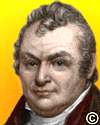
On 22 Jul 1763, James Geddes was born, an American civil engineer, lawyer and politician. In his early career, he began the manufacture of salt, in New York state. He became a justice of the peace and a member of the State assembly.
When the N.Y. State Legislature introduced a bill to fund a feasibility study for a New York State canal, it retained Judge Geddes (1808) to survey routes across the state, east to Lake Erie and Lake Ontario. On 20 Jan 1809, Geddes recommended a Hudson-Erie route to the State legislature. Funding was delayed, but construction on the Erie Canal began on 4 Jul 1817. Taking eight years to complete, it was one of the first great engineering works in North America. Close to 1,000 Erie Canal workers died of malaria in the swamps. Geddes also consulted on canal routes for Ohio.
His work is the subject of a chapter in Lives and Works of Civil and Military Engineers of America (1871). Canals may seem a quaint idea now, but you can read this chapter on James Geddes to understand what it took to provide a new water transport route from Lake Erie to the Atlantic Ocean.

On 22 Jul 1919, Dennis Flanagan was born, the American editor who steered the Scientific Americanfor 37 years. Flanagan rescued the magazine in the post WW II years when it was failing financially. The circulation rose from 40,000 to 600,000 under his leadership. He established a new style for the magazine, by inviting scientists to write its articles, aimed at the general reader. Those writers included such eminent scientists as Albert Einstein, Linus Pauling and J. Robert Oppenheimer.
Today's book pick is: Flanagan's Version: A Spectator's Guide to Science on the Eve of the 21st Century, by Dennis Flanagan who draws on his nearly four decades of editorial experience and insight to write a survey of the achievements of science. He examines the discoveries which he believes make them the areas of most significant growth he saw in his time. Weaving together narratives which include interesting anecdotes about the scientists, the circumstances of their work, historical fact, and scientific facts, Flanagan shows how they fit together and that modern scientists are “travelers on a common road.”
It is available from Amazon, typically about New from $11.99. Used from $2.19. (As of earlier time of writing - subject to change.)
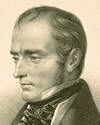 | Open up a few corpses: you will dissipate at once the darkness that observation alone could not dissipate. |
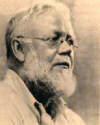 | All our civilization is based on invention; before invention, men lived on fruits and nuts and pine cones and slept in caves. |
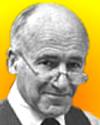 | In an age of specialization people are proud to be able to do one thing well, but if that is all they know about, they are missing out on much else life has to offer. |
| Before you look at today's web page, see if you can answer some of these questions about the events that happened on this day. Some of the names are very familiar. Others will likely stump you. Tickle your curiosity with these questions, then check your answers on today's web page. | |
| Births | |
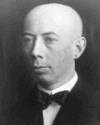 | Gustav Hertz, born 22 Jul 1887, was the nephew of Heinrich Hertz. Gustav was a German quantum physicist who, with James Franck, received the Nobel Prize for Physics in 1925 for the Franck-Hertz experiment, which confirmed the quantum theory that energy can be absorbed by an atom only in definite amounts and provided an important confirmation of the Bohr atomic model. Why was he forced to resign his professorship in 1934? |
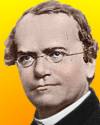 | An Austrian who spent his adult life with the Augustinian monastery in Brunn, where he was a pioneer of the study of heredity, was born 22 Jul 1822. As a geneticist, botanist and plant experimenter, he was the first to lay the mathematical foundation of the science of genetics. Over the period 1856-63, he grew and analyzed over 28,000 pea plants. Can you name this man? |
| Deaths | |
 | Reginald Fessenden (1866-1932) was a Canadian inventor and engineer with 300 patents. He read of Marconi's work and began experimenting himself. What was Fessenden’s achievement? |
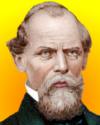 | John Augustus Roebling (1806-1869) was a German-American engineer. While working on the Pennsylvania Canal construction project, he saw applications for wire rope instead of hempen hausers. Experimenting at home began in 1840, and he sold his first wire rope in 1841. He founded a company for wire rope manufacturing and pioneered the design of construction of suspension bridges. Can you name a famous suspension bridge he designed? |
| Events | |
 | On 22 Jul 1994, the last of the large fragments of a comet strikes Jupiter (Fragment W). What is the name of this comet? |
 | On 22 Jul 1989, the youngest pilot to fly around the world, Tony Aliengena, returned to John Wayne Airport in Orange County, California, nearly seven weeks and 21,567 miles after taking off in a Cessna 210 Centurion. The around-the-world trip had included goodwill stops in the Soviet Union. The plane crashed while trying to take off from Alaska while the boy’s father was at the controls, giving his son a rest. There were no serious injuries, and the journey was completed. What was the age of the boy at the time? |
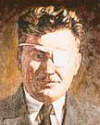 | On 22 Jul 1933, the first round-the-world solo flight (15,596 miles) was completed by a pilot, in a single-engine Lockheed Vega 5B aircraft Winnie Mae, in 7 days 18 hours and 49 minutes. The same pilot had made an accompanied flight around the world in 1931. Can you name this pilot? |
Fast answers for the previous newsletter for July 21: electron-transfer reactions in chemical systems • cobalt • Alan Shepard • Trans-Siberian Railway • tau neutrino.
 If you enjoy this newsletter, the website, or wish to offer encouragement or ideas, please send feedback by using your mail reader Reply button.
If you enjoy this newsletter, the website, or wish to offer encouragement or ideas, please send feedback by using your mail reader Reply button. Your click on a Facebook, StumbleUpon, or other social button on the site webpages is also a welcome sign of appreciation. Thank you for using them.
© This newsletter is copyright 2020 by todayinsci.com. Please respect the Webmaster's wishes and do not put copies online of the Newsletter — or any Today in Science History webpage. (If you already have done so, please remove them. Thank you.) Offline use in education is encouraged such as a printout on a bulletin board, or projected for classroom viewing. Online, descriptive links to our pages are welcomed, as these will provide a reader with the most recent revisions, additions and/or corrections of a webpage. For any other copyright questions, please contact the Webmaster by using your mail reader Reply button.
--
If you do not want to receive any more newsletters, Unsubscribe
To update your preferences and to unsubscribe visit this link
Executive Real Estate Business Class
-
"It was like a man with wings. It wasn't like anything you'd see on TV or in a monster movie." ...
About the publisher
Search This Blog
Blog Archive
-
▼
2021
(585)
-
▼
July
(50)
- Newsletter for Saturday 31 July.
- Newsletter for Friday 30 July.
- Power off and play this summer!
- Newsletter for Thursday 29 July.
- Newsletter for Wednesday 28 July.
- Newsletter for Tuesday 27 July.
- Newsletter for Monday 26 July.
- Newsletter for Sunday 25 July.
- Newsletter for Saturday 24 July.
- Newsletter for Friday 23 July.
- Newsletter for Thursday 22 July.
- Newsletter for Wednesday 21 July.
- Newsletter for Tuesday 20 July.
- Newsletter for Monday 19 July.
- The Machines That Built America Premieres Tonight
- Newsletter for Sunday 18 July.
- Newsletter for Saturday 17 July.
- Newsletter for Friday 16 July.
- Newsletter for Thursday 15 July.
- Newsletter for Wednesday 14 July.
- Newsletter for Tuesday 13 July.
- On This Day for July 12 - Geraldine Ferraro design...
- Newsletter for Monday 12 July.
- Inventing ‘The Machines That Built America’
- On This Day for July 11 - Duel between Aaron Burr ...
- Newsletter for Sunday 11 July.
- On This Day for July 10 - Telstar 1 launched, John...
- Newsletter for Saturday 10 July.
- On This Day for July 9 - Catherine the Great assum...
- Newsletter for Friday 9 July.
- New Season! Hope, Through History Podcast
- On This Day for July 8 - Vasco da Gama's first voy...
- Newsletter for Thursday 8 July.
- Ending soon: savings that pop! 🎆
- On This Day for July 7 - Hawaiian Islands annexed ...
- Newsletter for Wednesday 7 July.
- On This Day for July 6 - Anne Frank forced into hi...
- Newsletter for Tuesday 6 July.
- On This Day for July 5 - Israel's Law of Return pa...
- Newsletter for Monday 5 July.
- On This Day for July 4 - Declaration of Independen...
- Newsletter for Sunday 4 July.
- July 4th Sale at the HISTORY Store!
- On This Day for July 3 - Battle of Gettysburg ende...
- Newsletter for Saturday 3 July.
- On This Day for July 2 - Civil Rights Act signed, ...
- Newsletter for Friday 2 July.
- July 4th savings that pop!
- On This Day for July 1 - Dominion of Canada establ...
- Newsletter for Thursday 1 July.
-
▼
July
(50)
-
Blogroll
-
About
HistoryFact










0 comments:
Post a Comment